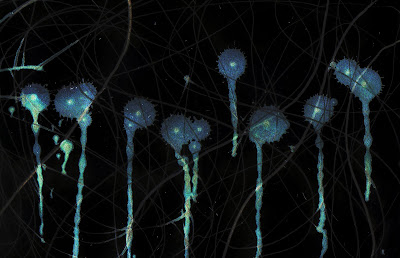Tracey Emin uses new and unusual media in her work. She brings techniques ranging from story-telling, drawing, film-making, installation, painting, neon, photography, appliquéd blankets and sculpture.

The use of neon is one of the most striking motifs in her work. Reflecting both the power of modern
advertising and it's wonderful tackiness, Emin's neon works have become some of her most
recognisable. That doesn't mean they don't say something too though, a work like 'You Forgot to Kiss
My Soul' (2001) expresses the frustrations, fears and hopes of an entire relationship.
Emin has grabbed the headlines for the graphic nature of some of her pieces, most notoriously 'My Bed'
(1998), in which the artist's unmade bed is strewn with the detritus of relationships past - including
used condoms and blood-stained underwear. Similarly 'Everyone I Have Ever Slept With 1963 - 1995'
(1995) was an honest and unsettling piece she created in an appliquéd tent, with names embroidered
inside representative of both shelter and restlessness.
I chose to research this contemporary artist as she is provocative and challenging. Her memorable and
intense work poses the question of the meaning of art today.People are fascinated by the raw openness
of her confessional work.
Emin is however, no stranger to criticism. Stephen Bayley dismissed her works as 'no better than a tea
bag' and along with Damien Hirst had 'abandoned beauty and embraced aesthetic outrage'. In her
defence of'My Bed' (1998), Emin states 'if people say the bed's a joke or a confidence trick I'd say
they're not very interested in art'. I find this piece particularly interesting as it forces the viewer to face
up to their own personal histories - memories that they may have chosen to repress.
Whatever people's opinions are of Emin, she is impossible to ignore, indeed the public visiting the
Tate's exhibition were much more visibly engaged by Emin's work than that of the other Turner Prize
nominees.















